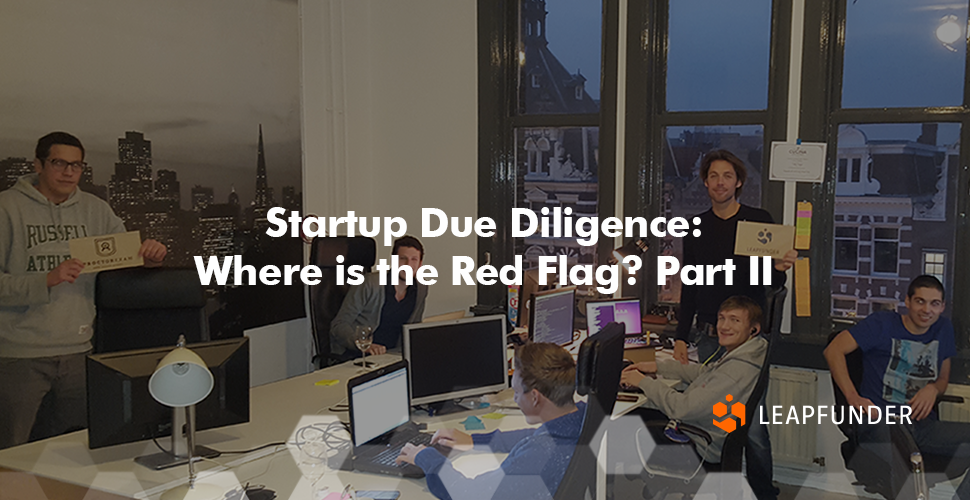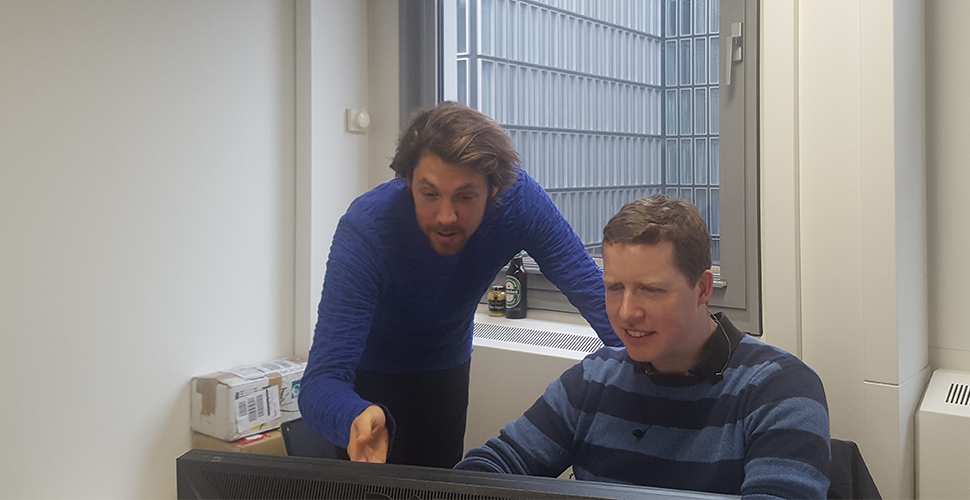Dear Investor,
This blog is part 2 of a series of tips on the due diligence process for potential startup investments. These tips can be helpful both for startups in the early stages of their venture who are trying to raise funding and for investors who are analysing startup investment deals.
In the first part, I shared some tips on what to keep an eye on, such as the startup’s legacy, funding history and funding options. In the second part, I’ll share more tips that will help startups learn not to make mistakes in their investment proposition & help investors to identify potential flaws.

Questions to ask in the due diligence process for potential startup investments: Part 2
8. Do the investors understand all risks?
Investing in startups is a very risky business. Investors should normally know that, and they should be willing to take the risk.
That being said, investors often only want to take risks they understand. If it is a market or product risk, they usually understand the dynamics. If a product is great, but the market isn’t quite ready to adopt it, and so the startup fails, fine. They invested, took the risk, and lost. That’s how it works.
But there are also risks associated with startup investing which are much more difficult to assess. For example, legal risks or risks endured because of regulation can be more complicated. For somebody who is not well-versed in the judicial system and government regulation, it is difficult to assess certain risks. In many cases, problems arise when there is no transparency in the situation. A quick example: say the product is great, and there is a demand for it in the market, but then a new regulation is put in place. As a result, the company fails, and of course, the hangover is much worse, because the risk came out of nowhere.
It is always important for startup founders to identify and assess every potential risk and communicate the risks clearly to the investors. That way, you minimise surprises if the venture takes a turn for the worse. Investors who have invested in a startup and enjoy working with them can deal with a startup failure due to unforeseen risks. If the collaboration is positively reviewed, and the investor has confidence in the founders, there is a better chance of them wanting to invest in the next business proposition, even if the last one failed. But if investors are burnt once by a lack of communication or transparency, they will likely never want to dedicate capital to those founders again. In general, there is no such thing as being too professional when it comes to making sure that investors know what they are getting into, and being clear about how things are going, even when they are not necessarily going the way you want.

9. What is the startup’s roadmap?
Startup founders should always be very clear on what they will do with the investment amount they ask for. What amount do I need? What will I use it for? For how long can I sustain my burn rate? What milestones will I achieve?
Investors should always ask these questions, and startup founders should have very clear and straightforward answers for them. If startup founders are prepared and able to give immediate and concise answers, then the investors will gain confidence in them and the startup. In case you work for a startup, and you do not know the answer, don’t make up stories. Instead, go back and prepare correctly. Transparency and communication are critical to success.
It is important not to get too focused on specific financials. I have seen many startup build financial forecasts that look up to 10 years forward in great detail, even though they have only been operational for less than a year. Every projection you make will be flawed since no one can predict the future of a company, especially one that has been around for less than a year. Of course, you do need to be able to project your financial forecast, but make sure not to get stuck too much on detail. Startup founders and investors with financial backgrounds can lose sight of the business proposition by spending too much time on analysing the financials. It is understandable because people like to focus on what they know, but remember that finance should be used as a support tool to show what the intention of the startup is and, further, what the potential can be. So it’s a means to that end. The spreadsheet is not the primary product of your business.
10. Who is a member of the Advisory Board or the Non-Executive board?
The non-executive board is an official part of the company. It should not be confused with the advisory board. An advisory board has no official status to the company; it is just a group of individuals who mentor and advise you. In contrast, the non-executive board has a formal role in serving the interests of the shareholders and works as a controlling function to management. The non-executive board can decide on sensitive issues such as a salary increase of management and other issues that may arise. They can also properly monitor management functions, advise on company policies, and serve as public relations agents. And advisory board does much the same, but it has no formal role and so it has less power.
The non-executive/ advisory board is considered a group of knowledgeable and independent professionals with a network and experience. Since the impact of a such a board can be large, it is important to a) choose them wisely and b) for the investor to review them carefully.
For early stage startups, we usually see they first form an informal advisory board that contains the larger investors (business angels). During the later funding rounds, VCs may take up the more formal non-executive board seats.

11. Where are the crown jewels?
It is essential to know where the most important assets, the crown jewels, of the company are located. For example, intellectual property (IP) or the source code should normally be owned by the entity which does the funding round, meaning the top holding or the top operational holding. It can be extremely dangerous if the IP is owned by an affiliated company or third party rather than by the legal entity which conducts the funding round. Let’s look at an example: one of the founders owns the IP in his personal holding, and he has 2 operational holdings below that. Both entities license the IP of the product of the holding of the founder, so they offer the same product. The difference is that they distribute the product in different markets: A and B. The investors invest in the operational holding A. What if operational holding B does really well, and A is lagging? It could mean that startup founder will choose not to spend any more time on making market A work, or even give it up. Why continue with market A if market B is much better off? However, this means that the investors who have put in capital into Market A lose all their money. The investors would have been much better off investing in the top holding alongside the founder. From that holding, they would share in all the proceeds from the IP, and their interests and the interests of the founder would have been aligned.
12. What financial instrument has been used for prior funding?
It is very important to realise which financial instrument is being used for the funding round: shares, debt, convertibles; they all work very differently. Since I predominantly cover early-stage startup funding, I will focus on convertibles.
A red flag bottleneck that is sometimes found in convertibles is around what happens during conversion. Some convertibles have an option built in which allows investors and/or the startup to decide claim a cash refund at the qualifying event.
If the startup has the option to repay in cash, investors will not get the shares they are after. Instead, they get their initial invested amount, plus accrued interest in cash. That could be a serious disappointment for investors that endured the high risk of investing in a startup but are merely compensated by a return which could have simply been achieved by investing in a loan. This is not how the risk/return mechanism should work.
Even more worrisome, in the case of an investor has the option to be repaid in cash, then the startup may get into serious trouble. In general, startups do not have a lot of cash on hand. Investors opting for cash repayment may well be a cause an increased burn rate for the startup that can be dangerous for the startup and for existing shareholders and therefore the other investors that opt to convert into shares. The sudden cash drain could mean a default or even bankruptcy of the startup.
The fairest and clear cut way is to make it mandatory for convertibles to convert into shares during either a qualifying event or at maturity. The only way of opting out should be when both startup and investor mutually agree on not converting and paying back the investor plus interest. But remember, you should always treat your investors equally, so if you offer one investor the option of opting out, then you should offer it to all investors.

The topics mentioned above can be quite confusing to investors who are new to the startup funding scene. And these are just a few common examples of red flags that appear in the due diligence process. Since there are so many examples, the main message for both startups and investors is to always keep the deal as simple as possible. Finally, make sure to get well-informed by talking to fellow investors, or perhaps an experienced professionals, when you decide to invest a large amount. I hope this information is useful to you when deciding on a startup deal. Please contact me if you want to talk more.
Sign up for Leapfunder to discover promising new startups:


